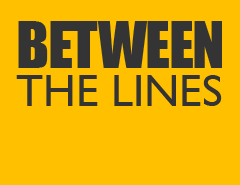Are banks now all too big to fail? History doesn’t repeat itself, but it does rhyme
Mark Twain – “History doesn’t repeat itself, but it does rhyme.”
Voltaire – “History never repeats itself. Man always does.”
Occasionally, events occur that remind us of times gone past. Is it only eight years since the global financial crash and subsequent credit crunch decimated western hemisphere economies? As to whether endless quantitative easing and emergency base rates actually rescued the monetary system from 2008 onwards, is a debate for another day. The Italian banks’ current emergency does have similarities with how the dominos began to fall over from 2008-2009. However, as is often stated; “this time it’s different.”
That difference is that having witnessed the (relatively) recent banking crisis, global central banks and leading politicians have discovered (by accident as much as design) a form of alchemy. If investment and retail banks have liquidity, or solvency issues there’s a simple cure; create more money. But how much is enough and is there a tipping point at which the solution is unworkable? With a rumoured €350 billion of NPLs (non performing loans) and up to €200 billion unlikely to ever be paid back, the Italian banking crisis is surely insoluble? Well judging by market reaction on Tuesday, coming less than 48 hours after the Italian referendum decision, market makers, movers, those with high level banco politico connections, traders and investors, believe the cleverest guys in the room have got our back, they’ve got this.
Despite rating agency Fitch downgrading its outlook on Italian banks from stable to negative for 2017, in the wake of the referendum vote and worries about their ability to recapitalise, the Italian banking sector recovered during Tuesday’s trading sessions. This was helped by the belief that the country’s parliament will approve its budget on Wednesday. Thereafter, a state bailout for troubled bank Monte dei Paschi would be agreed this weekend. If that doesn’t take place, there was growing talk that a state bailout could take place this weekend.
The idea that the bank would be recapitalised (one way or another) pushed the Italian banking index 9% higher, the best one day performance witnessed since 8th July. Monte dei Paschi added 1% after being 5% down, whilst Unicredit climbed by a significant 13%. Germany’s Deutsche Bank leapt 8%, whilst in the UK, Royal Bank of Scotland rose by circa 6% and Barclays by approx. 4.5%. The overall European banking index finished up 3%, reaching its highest level since January.
European markets also enjoyed a positive trading day. The FTSE 100 finished up 33.01 points, or 0.49% at 6779.84. Germany’s Dax rose 0.85% to 10,775.32, France’s CAC climbed 1.26% to 4631.94, Italy’s FTSE MIB jumped 4.15% to 17,757.80, Spain’s IBEX ended 2.64% higher at 8893.3. In Greece, the Athens market added 0.36% to 622.52, due to talks regarding a potential 20% reduction in its overall debt v GDP.
New orders for US durable factory goods rose by 2.7% in October, the largest improvement seen for circa eighteen months, above expectations of a 2.6% improvement. The September figure was also revised upwards, from a gain of 0.3% to 0.6%. The figure represented the fourth straight monthly increase. The S&P 500 rose by 0.3 percent to 2,212.23 mid afternoon New York time, the Dow Average gained 0.2 percent. Due to doubts that OPEC’s agreement cut is already being breached, West Texas Intermediate crude fell by 1.7 percent to $50.93 a barrel, Brent oil dropped 1.8 percent to $53.93, ending its four day winning streak, the longest witnessed since August. Copper lost 1.1 percent. Gold was little changed on the day at $1,169.68 an ounce.
The Dollar Spot Index, measured versus the greenback’s ten major peers, added 0.2 percent, after falling 0.4 percent on Monday. The euro weakened by 0.4 percent to $1.0720 after ending Monday up 0.9 percent, erasing an earlier slide of 1.5 percent after the Italian vote. The pound was up to 0.3 percent to $1.2775. The Australian dollar fell by 0.2 percent to 74.61 USD, after the Australian central bank kept interest rates unchanged.
Economic calendar events on 07/12/2016, that may affect market sentiment and direction
09:30, Industrial Production (YoY) (OCT) 0.5% – 0.3%. At 9.30 am London time, the UK’s industrial production data is published, the anticipation is for a rise to 0.5% for the month of October.
09:30, Manufacturing Production (YoY) (OCT) 0.7% – 0.2%. This UK index will be carefully monitored for any evidence of a Brexit effect. A rise of 0.2% is expected.
15:00, Bank of Canada Rate Decision 0.5% – 0.50%. Most analysts don’t expect the central Canadian bank to alter the current base rate of 0.5%.
15:00, NIESR Gross Domestic Product Estimate (NOV) 0.4% – 0.4%. Whilst not the publisher of the official ONS GDP data and figure, the NIESR is a respected institution that does possess an uncanny ability (through their methodology) of producing leading, rather than lagging, GDP predictions for the UK. Once again, signs of Brexit instability will be closely monitored.
15:00, JOLTS Job Openings (OCT) 5500 – 5486. USA job openings for the reported month of October are expected to remain relatively static at 5500.
15:30, USD DOE U.S. Crude Oil Inventories (DEC 2) -1500k -884k. Naturally (given the tremendous volatility witnessed in the oil markets, just before and since the OPEC Vienna meeting decision on production cuts were finally announced) any reduction of oil inventories in the USA will be closely watched for. Despite the USA not being part of OPEC, signs that a glut is once gain being built up, may affect the price of WTI.

